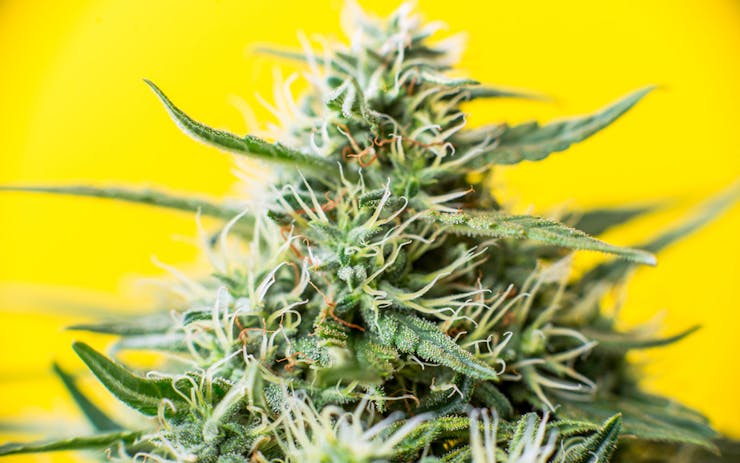CBGA, or cannabigerolic acid, is one of many minor cannabinoids produced by the cannabis plant.
Unsure of what a “cannabinoid” is? These are compounds cannabis produces that interact with a network of receptors in our body, known as the endocannabinoid system.
Performing a protective function for cannabis, CBGA is produced in the plant’s trichomes and triggers targeted plant cell necrosis for natural leaf pruning to allow the plant to maximize energy directed toward the flower.
CBGA is a foundational compound of the cannabis flower. In fact, you might think of CBGA as the “granddaddy” of cannabinoids. Why? Because CBGA is at the top of the cascade reaction that produces the three major cannabinoid lines:
- THCA (tetrahydrocannabinolic acid)
- CBDA (cannabidiolic acid)
- CBCA (cannabichromenic acid)
These eventually become THC, CBD, or CBC, respectively. CBGA may also convert to CBG, but in a majority of strains, CBGA eventually converts into either THC or CBD.

Figure 1: CBGA is the chemical precursor of THCA, CBDA, and CBCA (not shown). Enzymes within cannabis turn CBGA into either THCA or CBDA, which can be subsequently decarboxylated (“activated”) by light or heat energy to create THC or CBD. (Amy Phung/Leafly)
The Discovery of CBGA
Scientists have known about CBG (cannabigerol) for over 50 years. Israeli researchers were the first to isolate the cannabinoid, and 30 years later, Japanese researchers were the first to reveal that CBGA was its precursor. Despite the long history, minimal research has been conducted on CBGA to date.
Most of that CBGA research has focused on sustainable production of THCA for pharmaceutical and research uses. This research specifically has looked at the mechanism of converting CBGA into THCA.
Researchers have demonstrated a consistent way of replicating the cannabinoid in a species of yeast known as Pichia pastoris, one that is widely used for recombinant DNA protein. Research teams have even done computational modeling to optimize production, and in 2019, a California research team published their work on complete synthesis of cannabinoids, including CBGA, from yeast derivatives.
Potential Medical Benefits of CBGA
While there is very little medical research yet conducted on CBGA, early studies provide some hints about its potential applications down the road.
Cardiovascular Disease
CBGA may help diabetic patients combat some of the disease’s complications and comorbidities like cardiovascular disease. CBGA was studied in vitro and found to greatly inhibit the enzyme aldose reductase, a major contributor of the oxidative stress that leads to heart and other problems. As expected, the results of the CBGA tests were highly dose dependent. Synthetic inhibitor medications have severe side effects for many patients, so a CBGA plant-derived drug is a promising prospect.
Metabolic Disorders
Another research team discovered that CBGA may also help patients with other metabolic disorders. The 2019 in silico study (computer simulation) was performed to look at CBGA’s role in activating peroxisome proliferator activated receptors (PPARs) that regulate metabolism. When PPARs do not function properly, people develop diseases like diabetes and high levels of cholesterol or triglycerides (dyslipidemia). This study showed that CBGA activated the PPAR receptors, stimulating lipid metabolism and thereby reducing excess lipid accumulation. The study needs to be repeated in animal and human trials.
Colon Cancer
Finally, CBGA may one day prove crucial for patients with colorectal cancer, the third most common cancer and fourth leading cause of cancer-related death. Researchers looked at cytotoxic effects of CBGA extracted from cannabis, and found that not only did the CBGA kill colon cancer cells, but it hastened early cancer cell death and arrested the cancer cell cycle. While more research is definitely needed, the researchers were encouraged that CBGA may effectively target not only colon cancer cells, but could also prevent the growth and proliferation of polyps. Left untreated, these polyps grow into carcinomas.
There is an enormous lack of research regarding all aspects of CBGA consumption. While some anecdotal reports discuss juicing and ingesting CBGA from hemp, it’s always recommended to consult your doctor before taking experimentation into your own hands.





